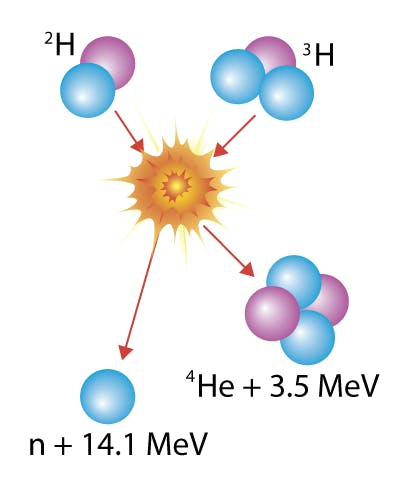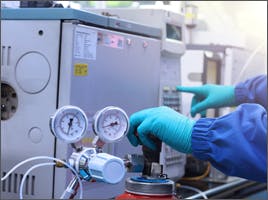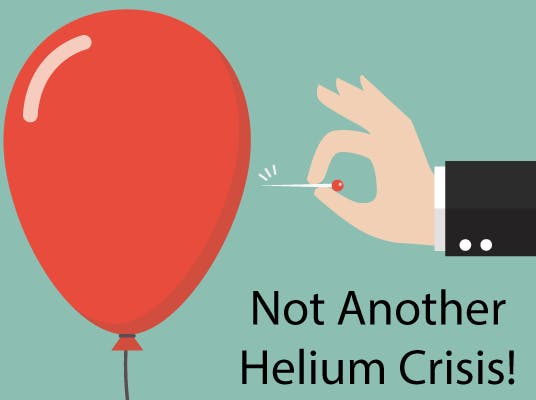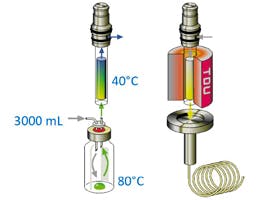
16 Apr 2019
GC Carrier Gas Helium To Hydrogen
GC Carrier Gas - From Helium to Hydrogen
It looks like one of the simplest chemical reaction of all time. Just fuse 2 hydrogen atoms and voila — helium. Unfortunately, it’s not that simple.
We don’t produce helium on Earth — we can only harvest it. No doubt you’ve heard it before, that this consequently alters the economics of its accessibility and affordability.

Fig 1: Nuclear Fusion.
So how do labs address the relative inaccessibility and high-cost of helium?
As we know, helium is a fantastic carrier gas for many applications in GC and GC-MS. Unfortunately, it’s used in other industries, which are prioritised during shortages (i.e. MRI, military application). This presents 3 key challenges to analytical labs:
- Long delays
- Shorter allocation
- Price surges
Among the people we speak to in the UK, most identify delivery times as the most challenging of these problems. Labs are seldom given the assurance that they will be able to complete their analysis to deadline. These restrictions have become increasingly commonplace since the middle of 2018, to prevent helium from being stockpiled, which has created an artificial shortage. However, artificial or otherwise, the problems with availability and high-cost persist.
Where does Helium come from?
On Earth, helium is actually a by-product — it is mined with uranium. As a matter of fact, the only known place in our solar system where it is produced naturally is the sun. And that, you know… presents some logistical issues!
Back on Earth, once helium has been extracted from uranium, it is then distilled and pressurised so that it can then be used in GC laboratories. This is not the only source — helium could potentially (or theoretically) be extracted from the air we breathe, but this presents two more challenges.
First of all, extracting helium from air would cost far too much to be economically viable on an industrial level. Plus, even though air extraction plants worldwide are equipped to extract helium, we would only be able to generate enough helium to satisfy less than 1% of the demand. This option just isn’t viable.
In terms of mining, there are only three major sources of helium in the world. This scarcity creates the repeated issues with supply lines and unworkable backlogs. In recent years, increasing delays are linked with the more common use of MRI and cooling systems, which utilise helium extensively. You’ll all remember the last global shortage that happened a few years ago. It impacted every GC lab across the world, and the only reason we went back to business as usual was through the discovery of a new helium source which stabilised the provision of the gas (for the time being, at least).
So, if we can’t produce helium (and can’t harvest it from the sun!) it is probably inevitable that we will experience another shortage in the near future.
What can we do?
Hydrogen is positioned as an alternative carrier gas and could prove to be really effective. It can be produced on demand by gas generators and stored in pressurised cylinders, making it far more convenient than helium.
But is it beneficial to use hydrogen? Well, there is one great benefit in using it as a carrier gas — it allows for fast chromatography and can potentially speed up some of your analysis. Why would helium continue to be used if hydrogen is cheaper, producible, and without risk of shortage?
There is, of course, the chance of explosion. Yes, hydrogen is highly-flammable and additional measures must be taken to prevent accidents from happening in the laboratory. Luckily, this can be mitigated by using generators, instead of hydrogen cylinders, to control the chemical.

Fig 2: Peak Gas Generators
With nearly two decades of experience in pioneering reliable gas generator technology, Peak Scientific develops market-leading nitrogen, hydrogen and zero air systems.
Gas Generation for Laboratory Applications from Peak Scientific »
Additionally, hydrogen produces lower sensitivity in MS than helium, which can be an issue for many labs. But not all labs — it might be more suitable for your chromatography than you think. So why not consider it?
What’s the next step?
A lot of existing methods and applications are based on helium being used as a carrier gas. While switching to hydrogen would require redevelopment and potentially revalidation, there’s still a good chance that it could be the preferable option.
That’s where we come in. Element can assist you in switching to hydrogen. Just contact our technical team at the following email address: [email protected]
For more information about our hydrogen generators, please contact [email protected]





